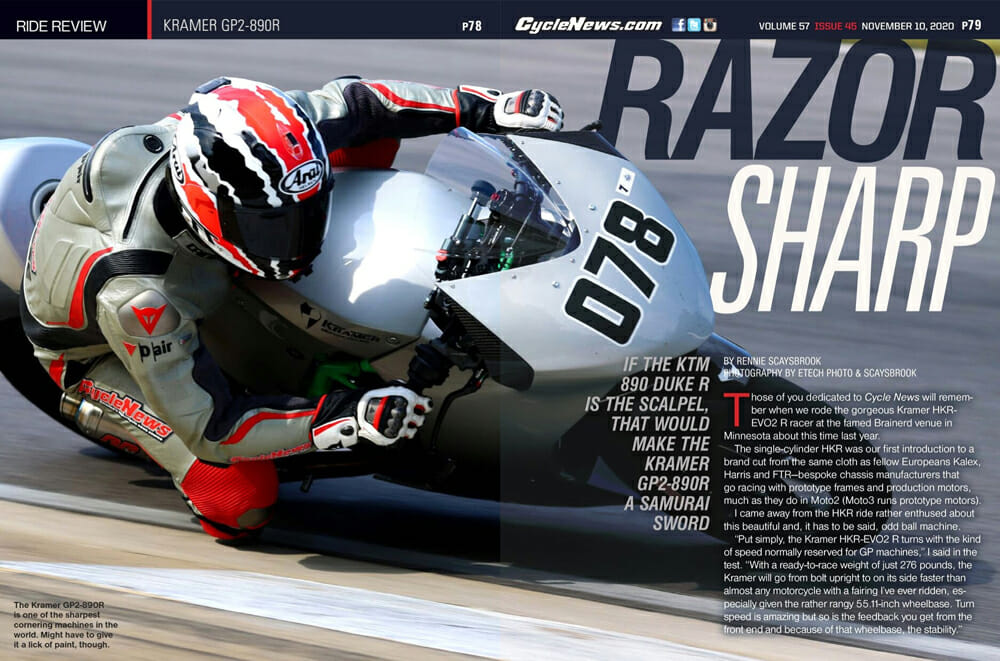Rennie Scaysbrook | November 12, 2020
If the KTM 890 Duke R is the scalpel, that would make the Kramer GP2 890 R a samurai sword.
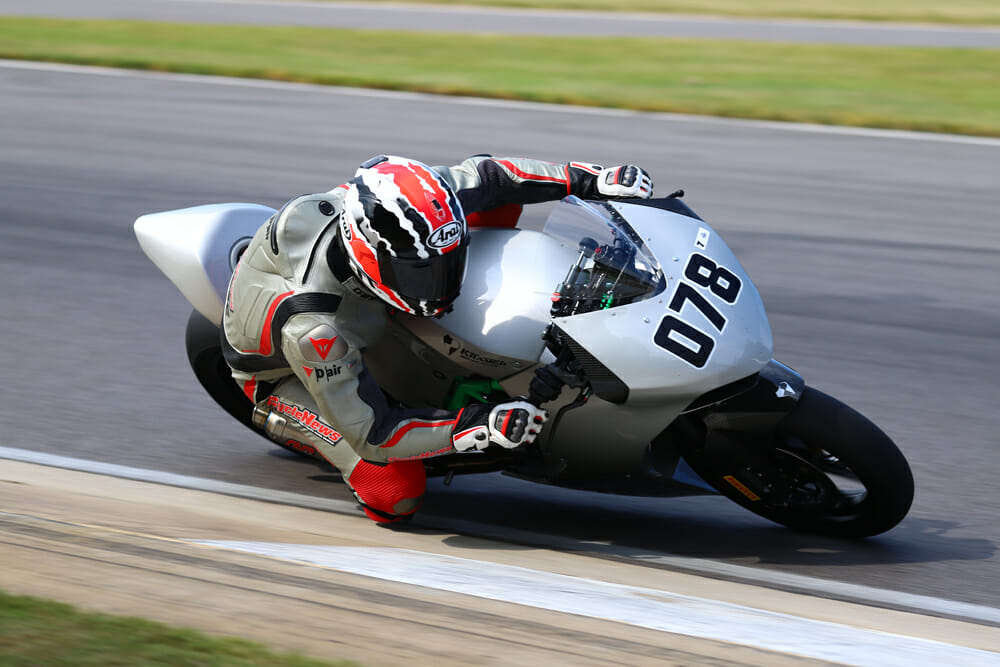 The Kramer GP2 890 R is one of the sharpest cornering machines in the world. Might have to give it a lick of paint, though.
The Kramer GP2 890 R is one of the sharpest cornering machines in the world. Might have to give it a lick of paint, though.
Photography by Etech Photo and Scaysbrook
Those of you dedicated to Cycle News will remember when we rode the gorgeous Kramer HKR-EVO2 R racer at the famed Brainerd venue in Minnesota about this time last year. The single-cylinder HKR was our first introduction to a brand cut from the same cloth as fellow Europeans Kalex, Harris and FTR—bespoke chassis manufacturers that go racing with prototype frames and production motors, much as they do in Moto2 (Moto3 runs prototype motors).
I came away from the HKR ride rather enthused about this beautiful and, it has to be said, odd ball machine.
“Put simply, the Kramer HKR-EVO2 R turns with the kind of speed normally reserved for GP machines,” I said in the test. “With a ready-to-race weight of just 276 pounds, the Kramer will go from bolt upright to on its side faster than almost any motorcycle with a fairing I’ve ever ridden, especially given the rather rangy 55.11-inch wheelbase. Turn speed is amazing but so is the feedback you get from the front end and because of that wheelbase, the stability.”
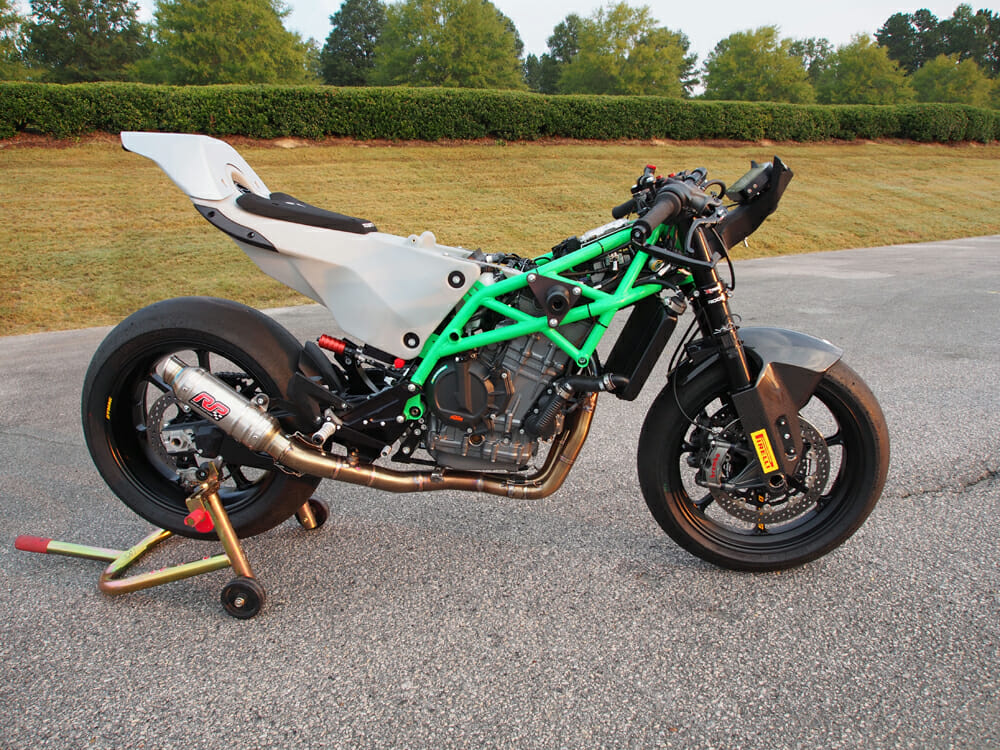 Tubular steel chassis is mated to the reinforced plastic gas tank/subframe/rider seat. Kramer has never broken one of those seat units, despite customers trying their best to.
Tubular steel chassis is mated to the reinforced plastic gas tank/subframe/rider seat. Kramer has never broken one of those seat units, despite customers trying their best to.
The HKR was/is still one of the most enjoyable racebikes I’ve had the pleasure of thrashing, but there was always one problem—power. Its single-cylinder 690, taken from the KTM 690 Duke that’s no longer sold in the U.S., is incredibly good fun and the lack of overall grunt encourages you to rail corners like never before to keep up roll speed, but at the end of the day, it’s still a single.
Enter the Kramer GP2 890 R. Two cylinders equal twice the fun, right?
I could give you the ultra-short version of the story by saying you double the power, double the speed, and therefore double the fun, but that would be doing the motorcycle and its creators a disservice.
Wrapped in a fiberglass fairing with carbon/Kevlar reinforcement, the $32,450 Kramer GP2 890 R is powered by the latest KTM 890 Duke R twin-cylinder powerplant, with Kramer Motorcycles USA head honcho Joe Karvonen getting a stout 118 horsepower and 69 lb-ft of torque out of the little motor on a Dynojet dyno.
The motor itself is basically stock. It’s the same cylinder head, internals and bottom end, mated to the stock six-speed gearbox. The box is fitted with an up-and-down quickshifter and auto-blipper, which did prove one of the machine’s few weak points. More on that later.
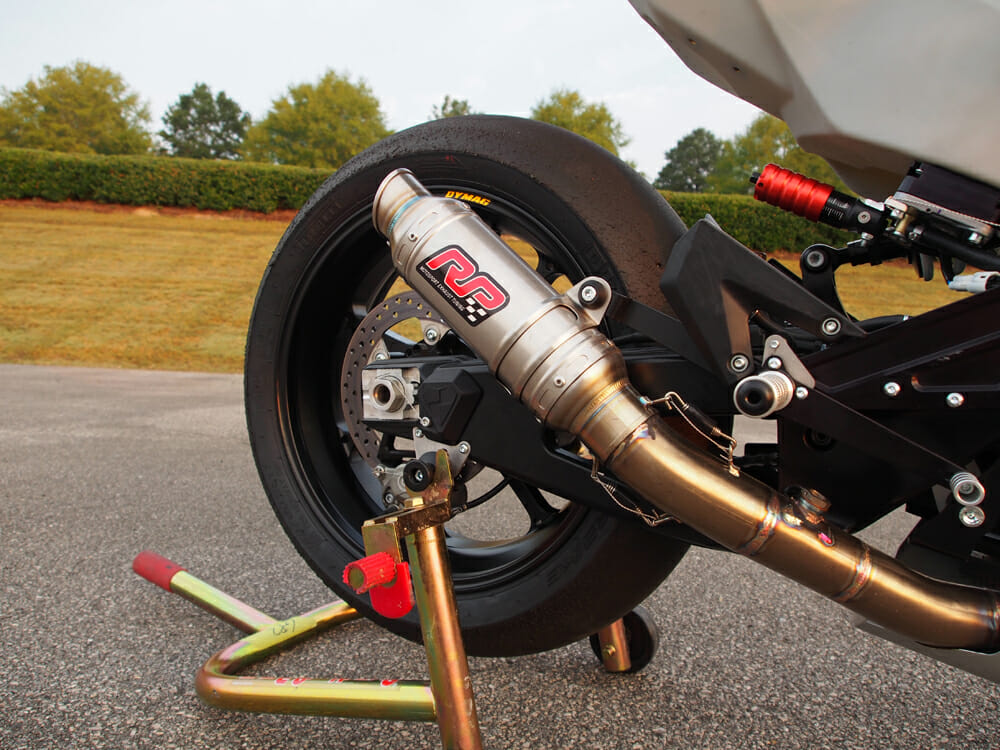 2-1 RP race exhaust comes straight out of Quebec, Canada, and sounds amazing.
2-1 RP race exhaust comes straight out of Quebec, Canada, and sounds amazing.
The GP2 is an amalgamation of parts from selected suppliers (KTM for the motor, WP for the fork and shock, Dymag wheels, Brembo brakes, etc.), but the center piece is the stunning tubular steel chassis created by Markus Kramer and his team about an hour’s drive east from Munich in Germany.
“We build our own chassis and swingarm, that’s always been a trademark of the brand,” says Karvonen. “Compared to the chassis on the single-cylinder EVO2, the GP2 gets an adjustable frame rake, which allows us to give the rider plus or minus one degree of rake angle, or stem angle, in half a degree increments. This combines with the adjustable offset triple clamps to give us lots of options when setting up the motorcycle for different riders.”
All Kramer motorcycles come standard with WP suspension and the 890 is no exception. Up front is WP Apex Super Competition close-cartridge forks, and an apex Super Competition shock out back, both fully adjustable, of course.
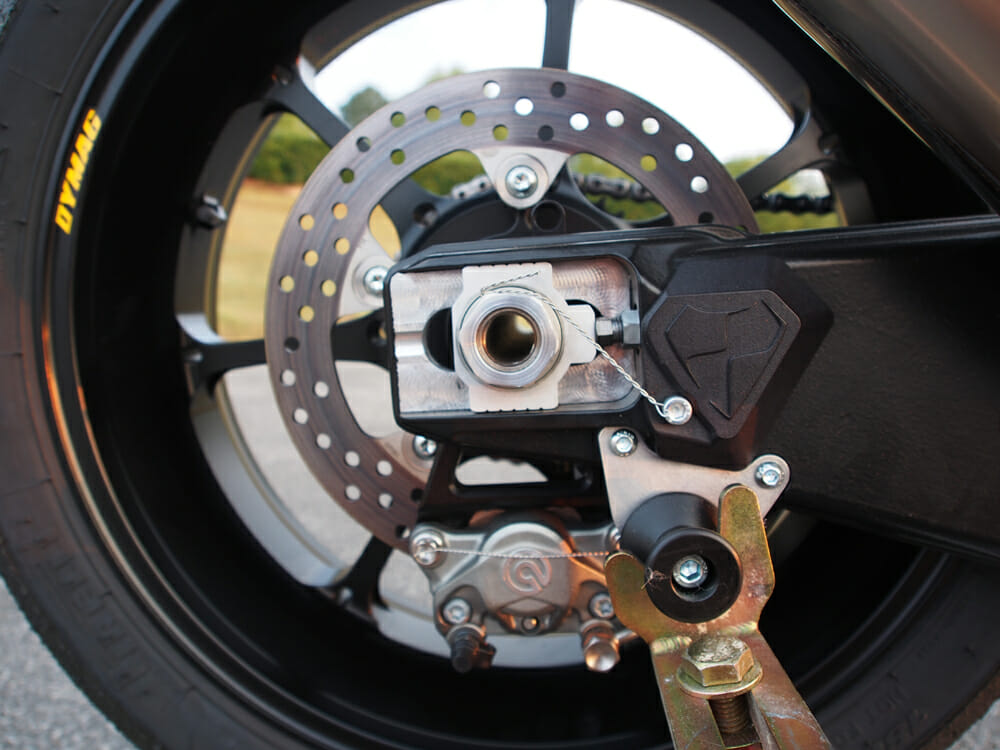 Attention to detail is excellent on the GP2.
Attention to detail is excellent on the GP2.
“We worked with a great partner, XTrig [affiliated with WP], to build the adjustable offset clamps,” says Karvonen. “We pair that up with a set of WP Apex forks—a pressurized, closed-chamber fork. It’s what we started using last year with the 690. It’s a little bit different calibration for the 890 over the 690, but that fork is a huge upgrade.”
Braking comes care of twin 290mm fully floating discs mated to twin four-piston Brembo Stylema calipers (the same as on the first-generation Ducati Panigale V4 S of 2018). These are squeezed by a Brembo 19 RCS Corsa Corta master-cylinder. Out back, there’s a 230mm fully-floating disc mated to a Brembo two-piston caliper. Being a racer, there’s no ABS to worry about. Tires come curtesy of a Pirelli Diablo Superbike SC1 NHS 120/70 ZR17 up front and a Pirelli Diablo Superbike SC1 NHS 180/60 ZR17 in the back.
One of the big talking points with any Kramer is the gas tank. Instead of using the tank in the traditional place behind the steering head, the 4.3-gallon gas tank, subframe and rider seat are all one unit. There’s no steel bracketry, no extra mounting or weight. Superbike and GP teams have known for years the best place to have the gas tank is not high up like a traditional tank but lower in the chassis. The Kramer design allows for weight distribution to be better maintained as the race wears on and the fuel load goes down.
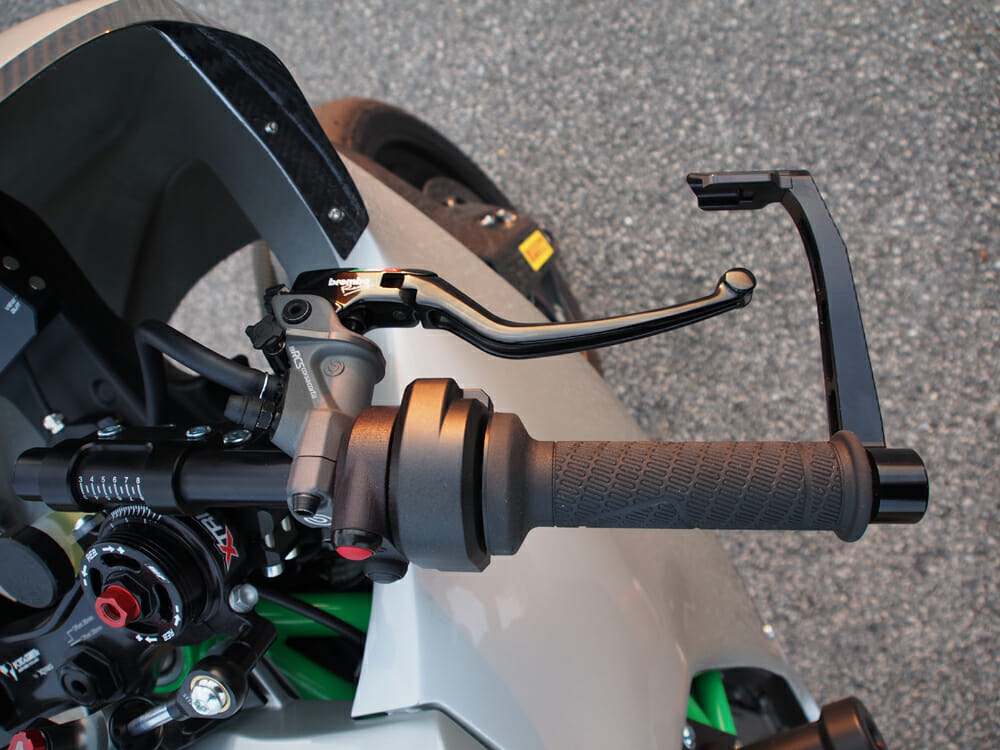 Brembo RCs master-cylinder offers excellent feel at the lever.
Brembo RCs master-cylinder offers excellent feel at the lever.
With a full tank of gas, the Kramer GP2 890 R weighs a stunning 330 pounds, ready to race.
Kramer teamed up with AiM to for the 890 version, using the British company’s very trick dash that displays most data any racer would want.
The AiM dash allows you to download your data such as lap times and all of your telemetry data that you’d expect through the standard AiM software, like throttle position, brake pressure, GPS location, accelerometer, G-force, etc.,” says Karvonen. The AiM dash makes this thing a proper racebike. The 890 Duke is a great bike. It’s a hard thing to make better, but we feel like we did that.”
The electronics are still a bit of a work in progress. Kramer will be providing traction control in the future with each GP2, but as of right now it’s not available. Other than that, each GP2 comes with two engine maps (one for wet, one for dry), as well as two engine braking maps. This is one area potential customers will want sorted before they go dropping $32K, as having traction control enabled on such a high-price machine should be a given.
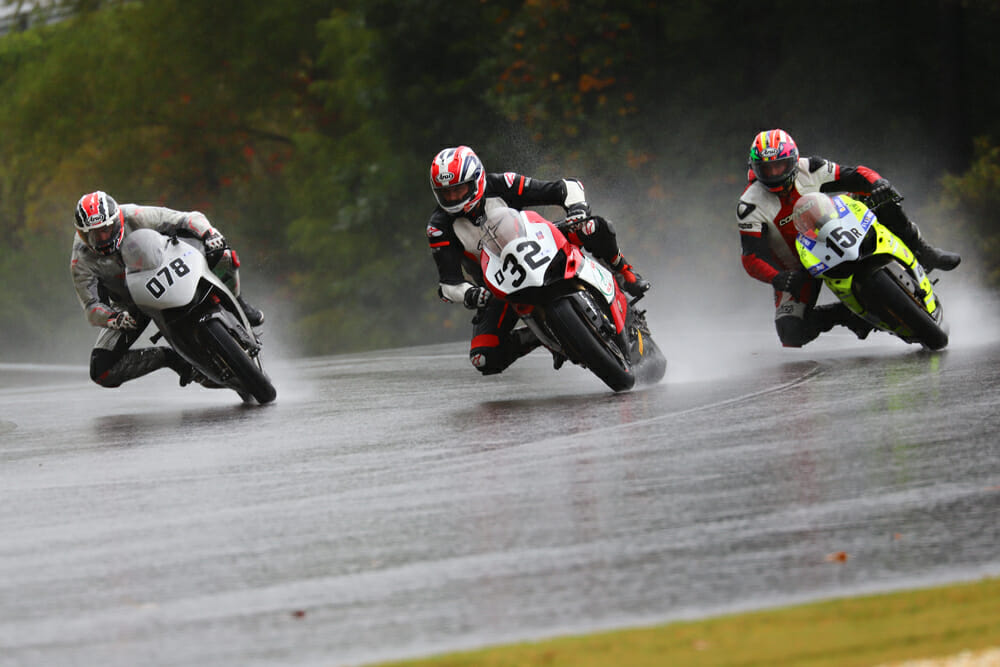 This was about as dry as it got from Friday onward. Rennie (078) came away with a win, a second, and…
This was about as dry as it got from Friday onward. Rennie (078) came away with a win, a second, and…
Kramer GP2 890 R at Barber Motorsports Park
For the chance to get a spin on the Kramer GP2 890 R, we headed to the stunning rider playground of Barber Motorsports Park in Birmingham, Alabama, as part of what would normally be the Barber Vintage Festival.
That festival was canned, like pretty much everything else this year, but the event was still allowed to go ahead, sans spectators.
At Barber we got the full gamut—beautiful sunshine one day one, then nothing but torrential rain for the next three days, where the only name of the game was staying upright (something I failed to do on the final day).
But, enough of that.
Like the HKR, the first thing you notice even in the pits is the lack of girth. At 310 pounds dry, the GP2 feels not much heavier than a 450 motocrosser. Flat bars, low-set pegs, and a seat height of 34 inches add up to the cockpit offering an extremely rangy riding position, meaning riders from 5’5” to 6’5” can be comfortably accommodated.
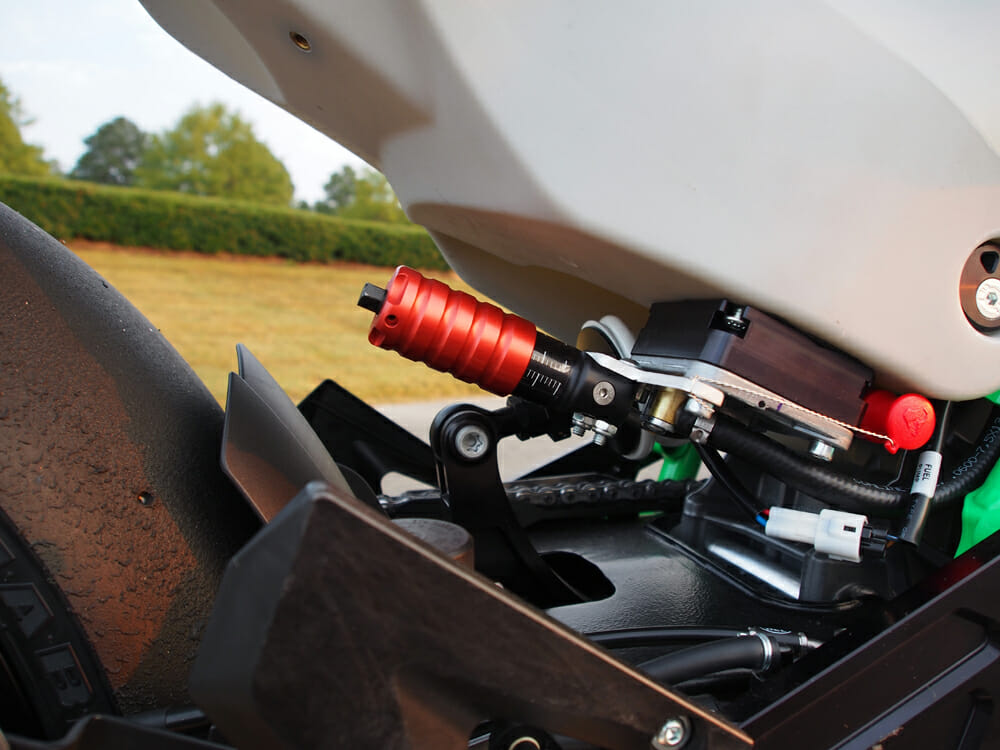 Marked, remote preload adjuster makes for super easy suspension adjustment.
Marked, remote preload adjuster makes for super easy suspension adjustment.
With no traction control on offer, it’s a good thing the motor is so tractable. The 890 Duke R motor is one of the sweetest powerplants released this year, with a broad range of torque and high-rpm power.
It pays to keep the 890 in its happy spot of between 7-9000 rpm—at that point, the drive is strong but never overpowering, and encourages you lap after lap to get on the gas earlier and harder.
If you hang onto a gear too long, however, you’ll rev right into the brick wall of a rev limiter. The cut is harsh, and once you’ve done it, you’ll remember to shift before you see 10,000 rpm.
I had various issues with the gearbox during my four days on the bike. We tried a couple of different shift-lever heights but in each session, wet or dry, I would encounter one of two missed shifts from the touchy quickshift system. I found the auto-blipper not as smooth as I’d have liked. It did work, but not as smoothly as hoped so I reverted back to using the clutch for corner entry. This isn’t a major slight on the Kramer as I think many production auto-blippers (including what I had on my Pikes Peak Aprilia Tuono) are simply not as good as they need to be.
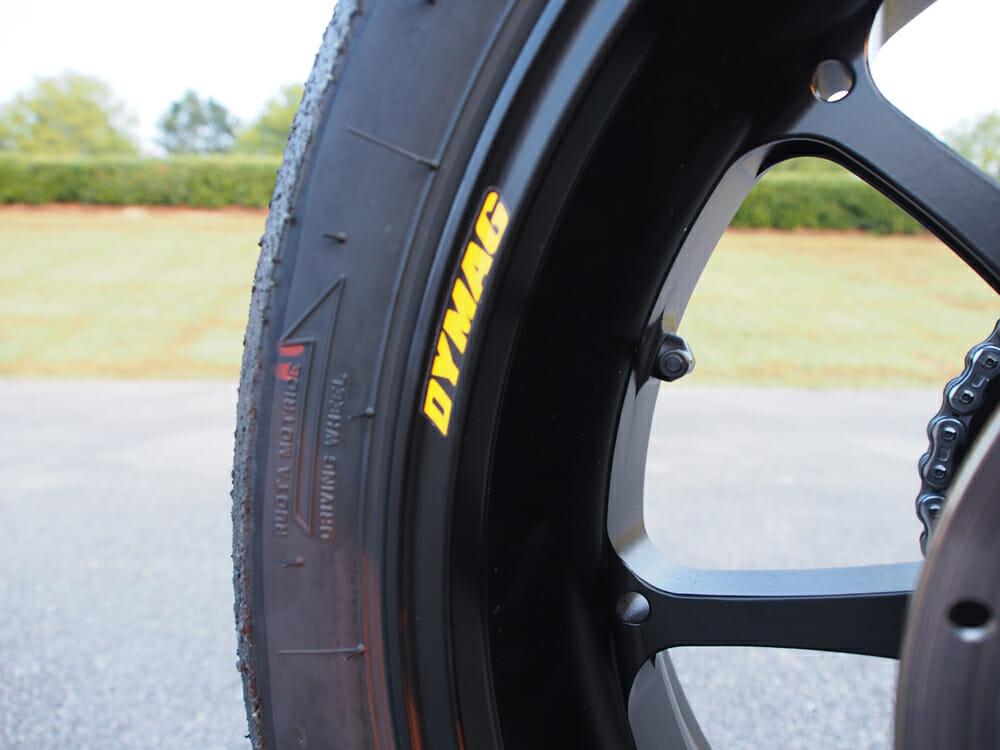 Dymag UPX7 forged aluminum wheels are as light as they come and contribute to the Kramer’s incredible direction change speed.
Dymag UPX7 forged aluminum wheels are as light as they come and contribute to the Kramer’s incredible direction change speed.
However, the detriment of the gearbox was more than made up by the superb chassis and the way you can simply attack the apex under braking. The Kramer is stiff where you want it, and offers a nice degree of flex so that when you start dialing in the power, you can feel what the chassis and suspension are doing.
There’s so much power on offer from the Brembo 19 RCS master-cylinder and Stylema caliper setup, more than needed, and it’s matched by great feel at the lever. Combined with the WP Super Competition fork and the feel at the lever, you can trail brake right up to the apex and never worry about what the front is doing.
Alternatively, once you spot your corner exit and unleash the throttle, the Kramer will hold its line easily and never once did I have an issue with the motorcycle understeering of its own accord.
I hate to say it, but it’s just like the single-cylinder HKR, just better. Maybe twice the cylinders does equal twice the fun.
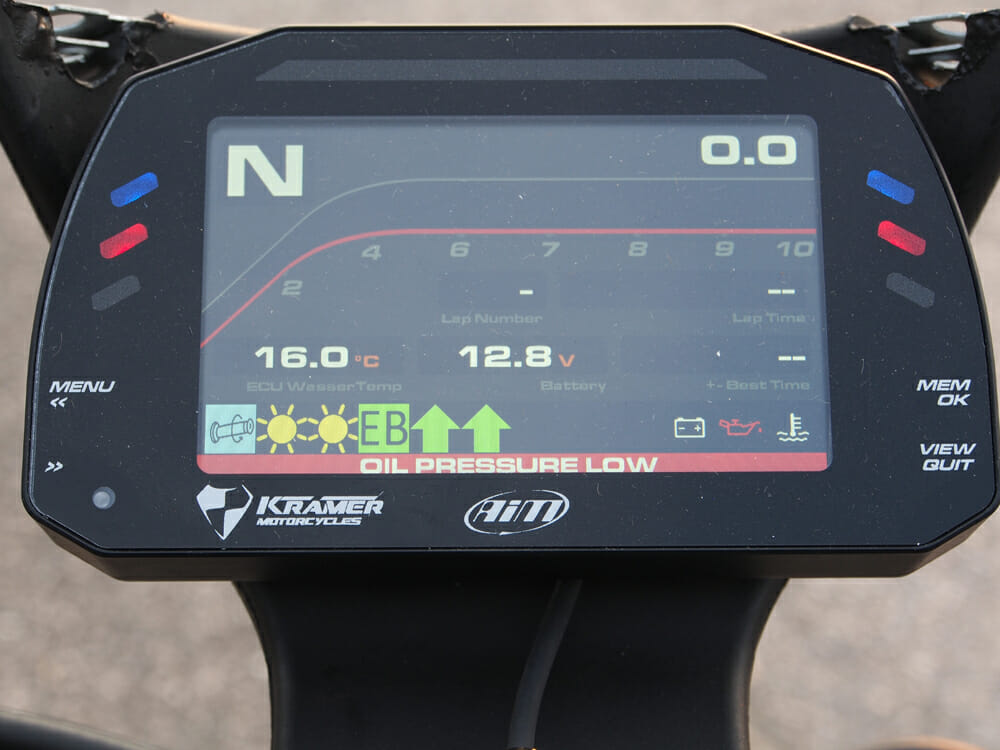 New AiM dash provides all the data most amateur racers will ever need.
New AiM dash provides all the data most amateur racers will ever need.
The lack of weight makes the Kramer easy to ride for a long time. The AHRMA races were shortened, but we got a few sessions in the dry on day one where we knocked out 12 laps and I could have gone another 12, no problem. It’s not tiring to ride, it simply throws confidence at you and makes you feel like a superstar, so long as you get your shifts correct and don’t hit the rev limiter.
This is the kind of racer you buy if you’re looking at a long-term project. Not many people have the cash for a GP2, but if you think of this as a turnkey racer you plan on using for the next 10 years in Twins racing classes, like those that compete in AHRMA, it suddenly becomes a viable option.
 If you’re a club racer who wants a project for the next few years, the Kramer could be your answer.
If you’re a club racer who wants a project for the next few years, the Kramer could be your answer.
The machines are exquisitely made, and through Joe Karvonen you’re getting a direct link to the Kramer factory in Germany, which is far different than if you bought at CBR from your local Honda dealership.
As for the races, I won the first, came second in the second, and crashed out in the third while trying to make a pass for the win in awful rain conditions. May as well go down trying. CN
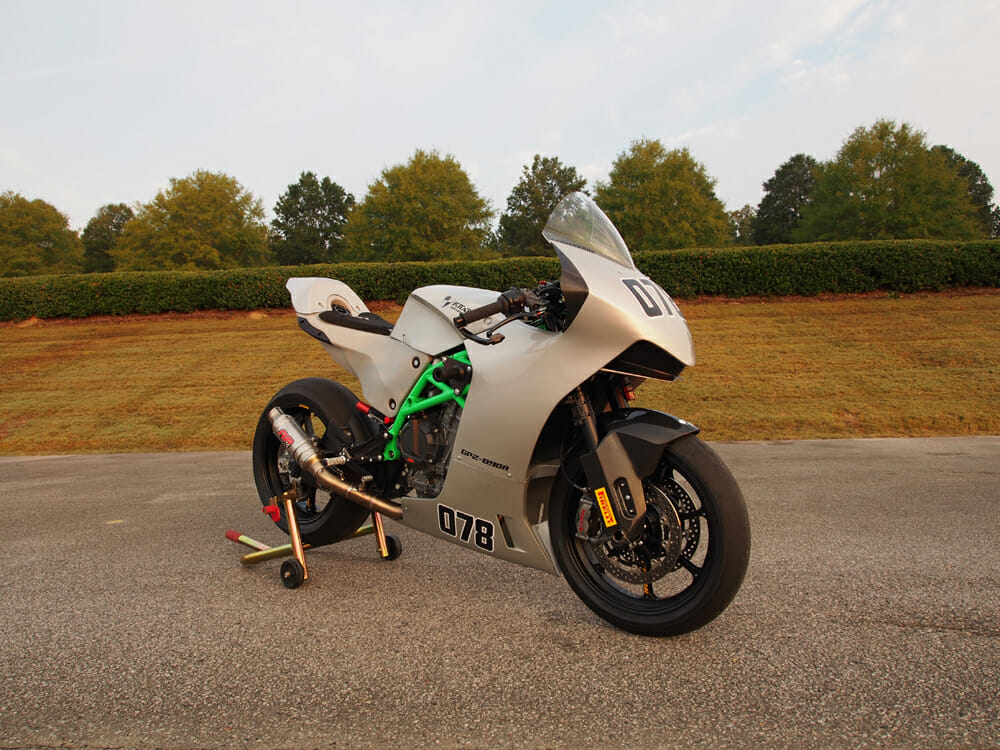
Kramer GP2 890 R Specifications
|
|
| MSRP: |
$32,450 |
| Engine: |
KTM parallel-twin engine, liquid-cooled |
| Displacement: |
890cc |
| Bore x stroke: |
90.7 x 68.8mm |
| Fuel injection: |
Bosch EMS with RBW |
| Compression ratio: |
12.8:1 |
| Power: |
130 hp at 9500 rpm |
| Torque: |
73.75 lb-ft at 6900 rpm |
| Exhaust: |
2-1 |
| Transmission: |
6-speed Quickshift up/down |
| Clutch: |
PASC slipper clutch, mechanical operated |
| Electronics: |
Aadjustable engine maps, dry throttle map, wet throttle map, high/low engine brake |
| Chassis: |
Trellis CrMo steel frame |
| Front suspension: |
WP Super Competition closed-cartridge forks with quick-change front axle |
| Rear suspension: |
WP Super Competition shock with length adjustment and hydraulic spring preload adjuster |
| Front brake: |
Dual 290mm fully floating discs, Brembo 19 RCS Corsa Corta master cylinder, Brembo Monobloc Stylema calipers. |
| Rear brake: |
230mm fully floating disc with Brembo 2-piston caliper |
| Front tire: |
Pirelli Diablo Superbike SC1 NHS 120/70 ZR17 |
| Rear tire: |
Pirelli Diablo Superbike SC1 NHS 180/60 ZR17 |
| Rake: |
24° adjustable +/- 1°, adjustable triple tree offset 26mm or 28mm. |
| Wheelbase: |
56 in. |
| Fuel capacity: |
4.3 gal. |
| Weight (dry, claimed): |
310 lbs. |
